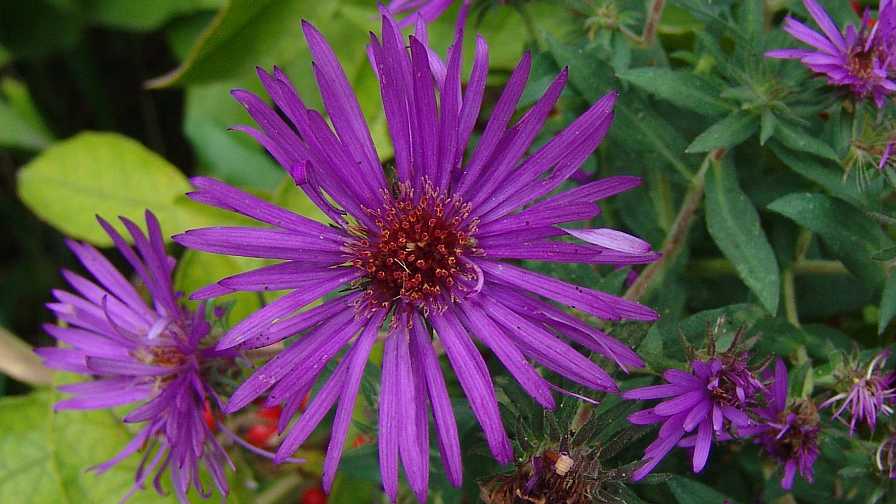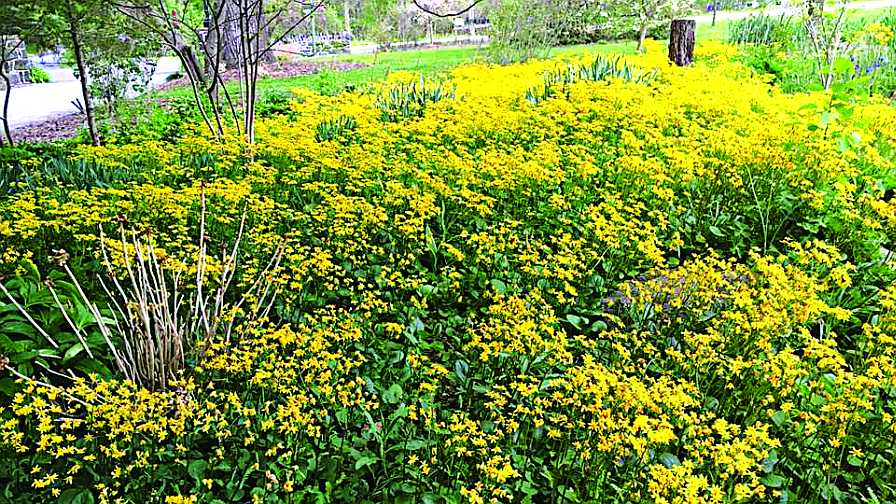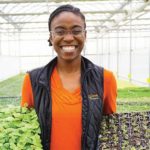Native Plant Propagation Techniques That Really Work

When taking cuttings from Aster ‘Purple Dome,’ juvenility is important. For best results, avoid flowering cuttings.
Photo by Victoria Bolden
Perennial plant propagation can yield a multitude of new plants in a few months to a few years. There are various ways to propagate plants including seed, tissue culture, bare root, divisions, and unrooted cuttings. The propagator’s desired outcome and the limitations of the plant will determine which method is best for the grower.
Keep Juvenility in Mind With Aster sp.
When propagating plants such as Aster novae-angliae (Symphyotrichum novae-angliae), the key is juvenility. For A. ‘Purple Dome,’ also known as New England aster, this means taking tip cuttings from actively growing plants. For best results, avoid flowering cuttings. Aster cuttings will typically produce roots in two to four weeks with indole-3-butyric acid (IBA) of 1,000 ppm, resulting in a finished landscape plug in eight weeks.
Plants should be pinched at around four weeks, depending on the growing environment. These plants propagate well in 70°F under mist. Once the plants start to root, cut back on mist, and water and fertilize as needed. A. ‘Vibrant Dome’ cuttings grow into beautiful, mildew-resistant plants that top out at just under 2 feet tall with hot-pink flowers in autumn. Aster sp. are deer resistant, loves full sun, attracts pollinators, and combines nicely as a cut flower. This native gem even tolerates salt.
Try Tissue Culture for Disease-Free Packera Plants
A popular groundcover plant at North Creek Nurseries, Packera aurea (syn. Senecio aureus) has been propagated several ways such as tissue culture, unrooted cuttings, and as divisions. Divisional propagation works best if the media is free of disease or other organisms such as Thielaviopsis — a fungal disease that can wipe out whole crops and leave stock plants struggling. Division may be okay for an annual or biannual harvest, but a monthly harvest schedule may be too much on your stock plants. Tissue culture is a great propagation method to keep the plants free of disease while simultaneously maintaining stock plant juvenility. Packera divisions can be encouraged by trimming the stock plants regularly; cuttings require mist and a rooting hormone to be successful.

Division propagation works best for the popular groundcover Packera, if the media is free of disease or other organisms such as Thielaviopsis.
Photo by Victoria Bolden
Start with Healthy Seeds
Seed propagation can vary depending on the seed in question. Aside from having healthy fields to harvest viable seed from, seed collection is another important part of the propagation process. One must first make sure the seed is viable. If seed is collected too late or stored too long, it may not germinate well.
Most seeds that mature in the fall are intended to germinate in the spring and may have a safety mechanism to prevent premature germination in the winter months. When looking for seed ripeness, watch for indicators such as change in color and ease of harvesting (pulling or shaking off seed head). The parent plant may show signs of dieback as well; of course, you do have to be careful because drought stress or disease can cause this.
North Creek employs a variety of seed treatments to overcome natural germination prohibitors. Cold, moist stratification is used to simulate winter for dormant seeds using a refrigerator, moist media, and a sandwich bag. Scarification is used to crack open the seed coat in plants that normally need a freeze and thaw to achieve this.
Soaking seeds can help break the seed coat or remove natural chemicals, preventing germination. Microbial inoculants can be used to stimulate plant growth and aid with nitrogen fixation. Once the seed is ready to be sown, use clean soil and proper moisture methods to achieve germination. Some seeds require light for germination, but most do not need it until after the cotyledons emerge.










